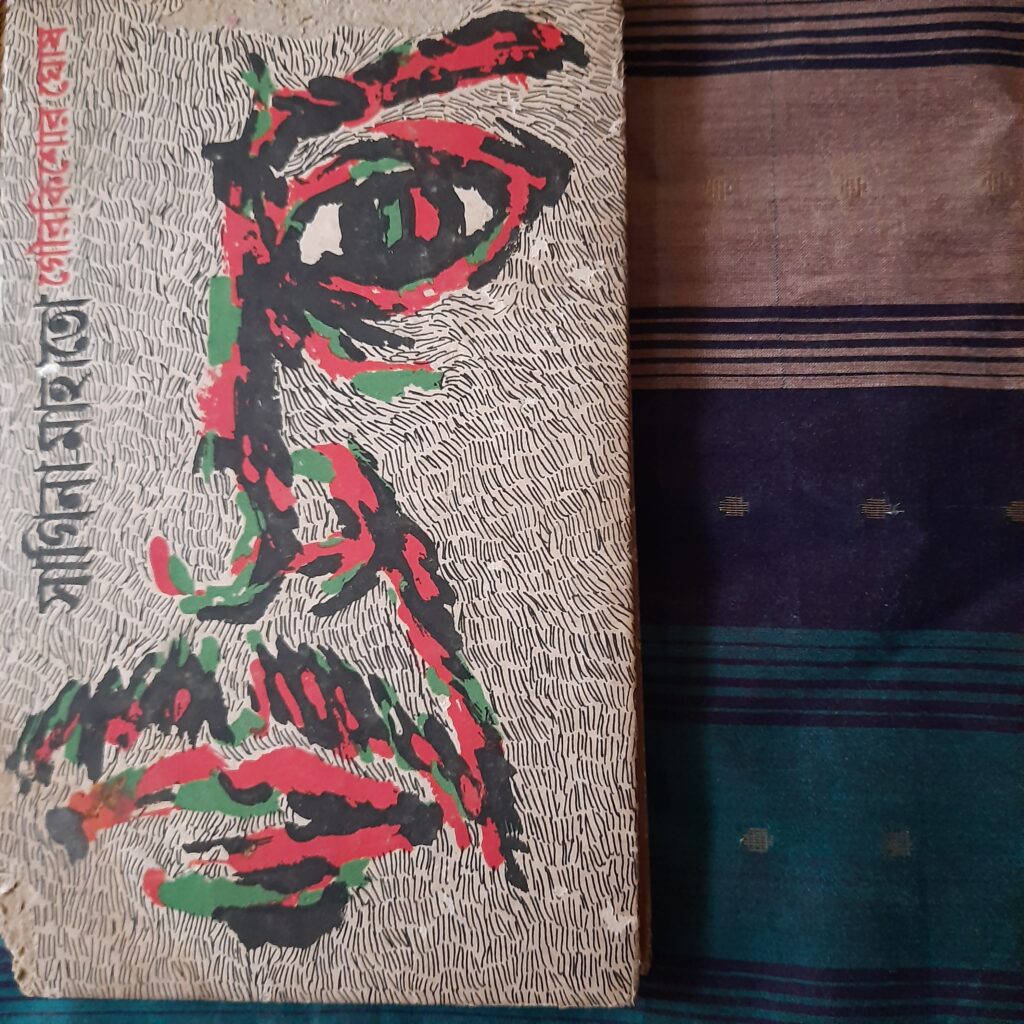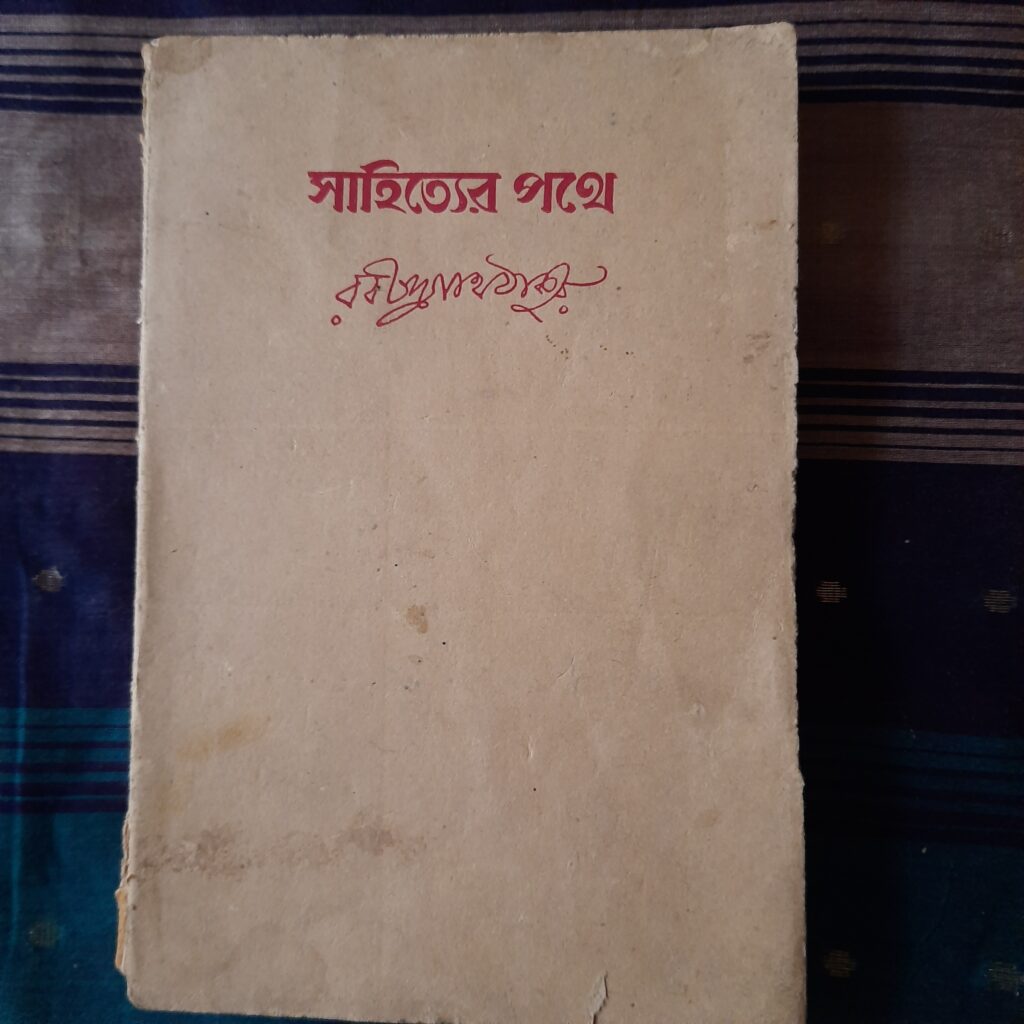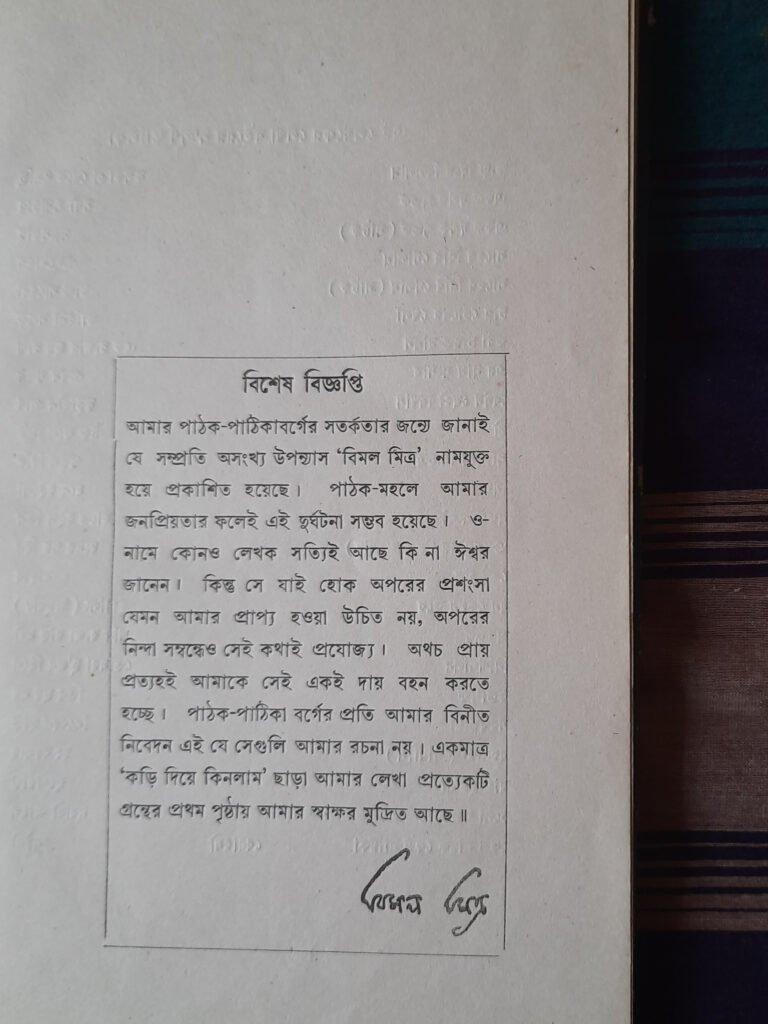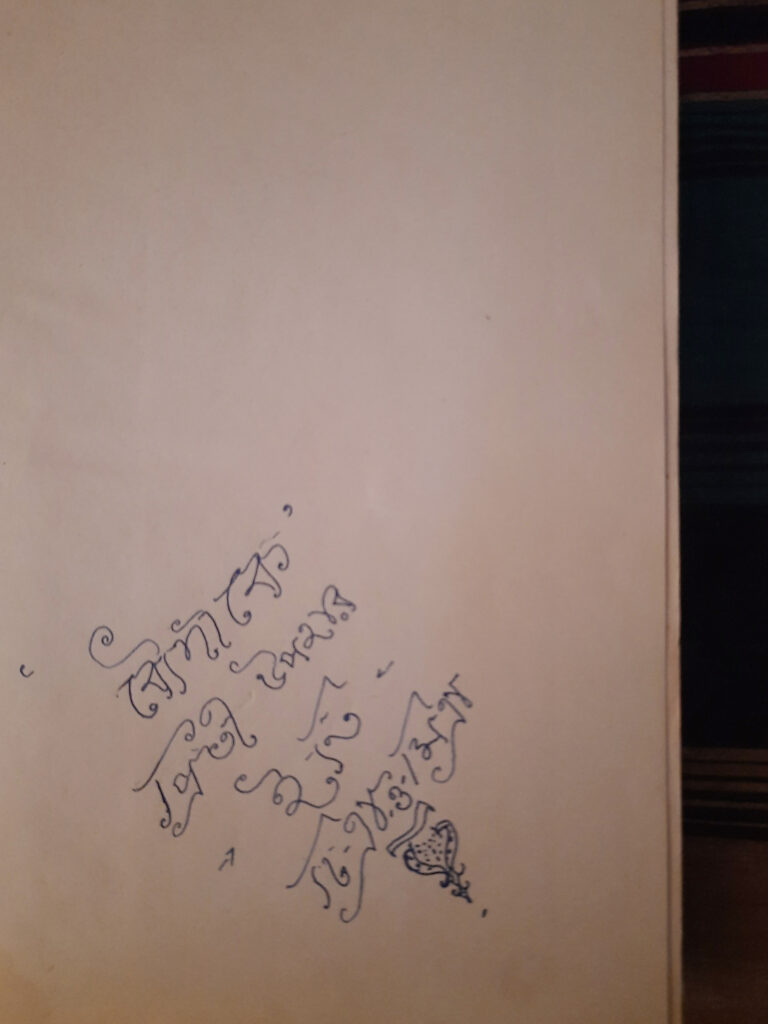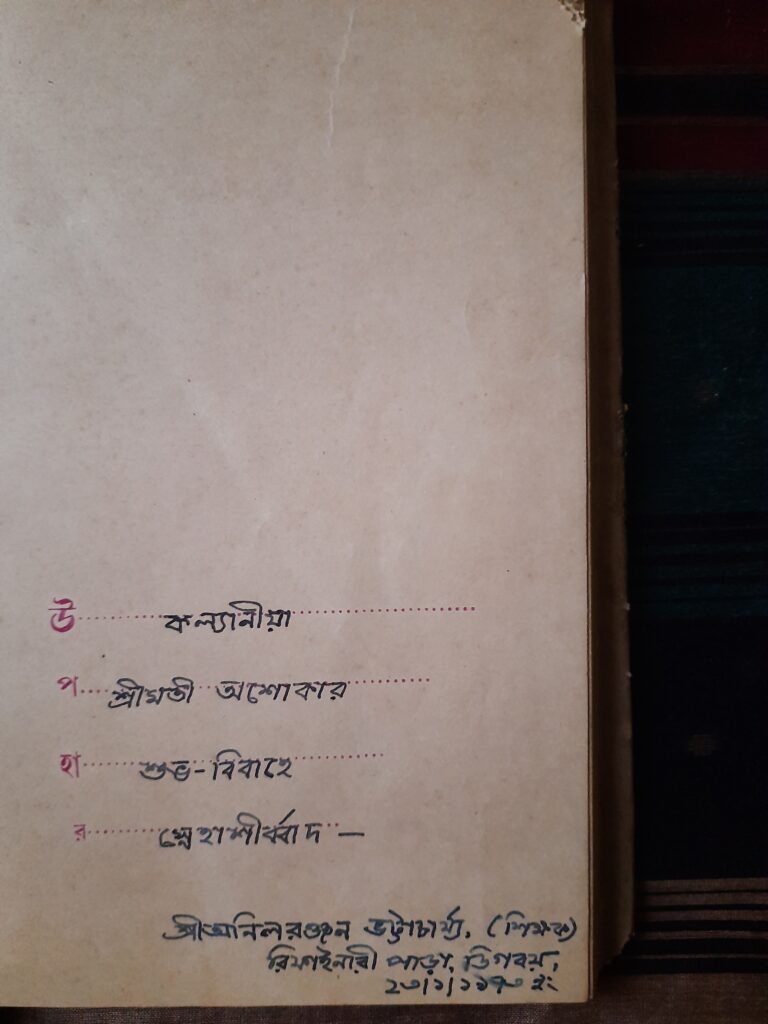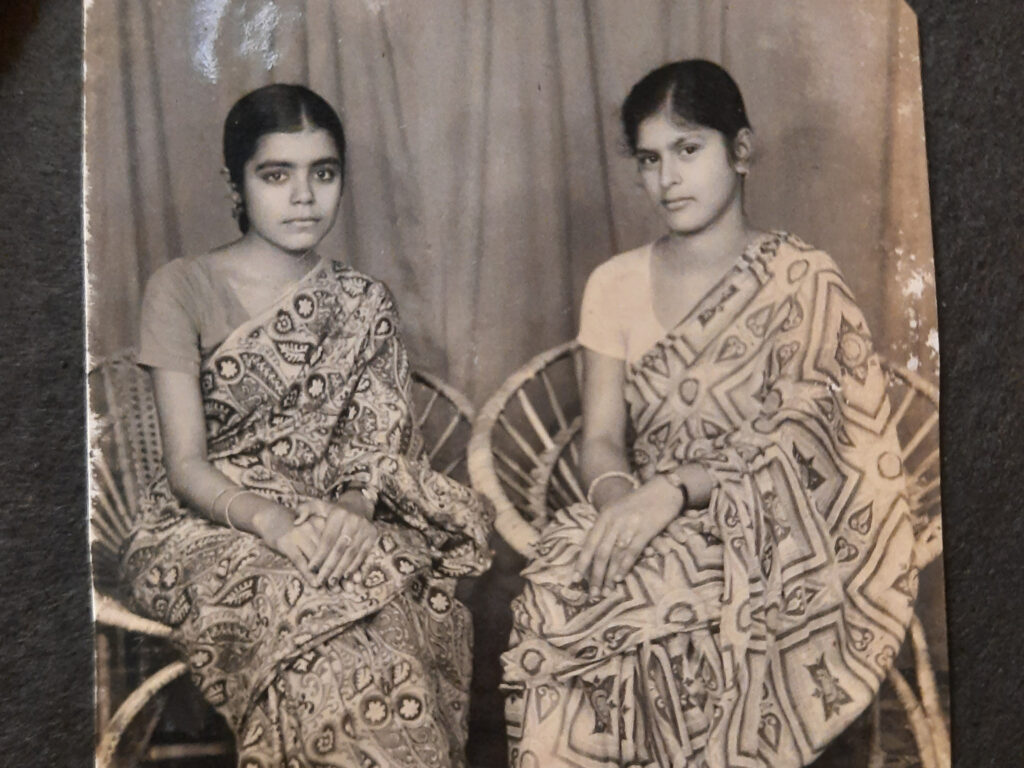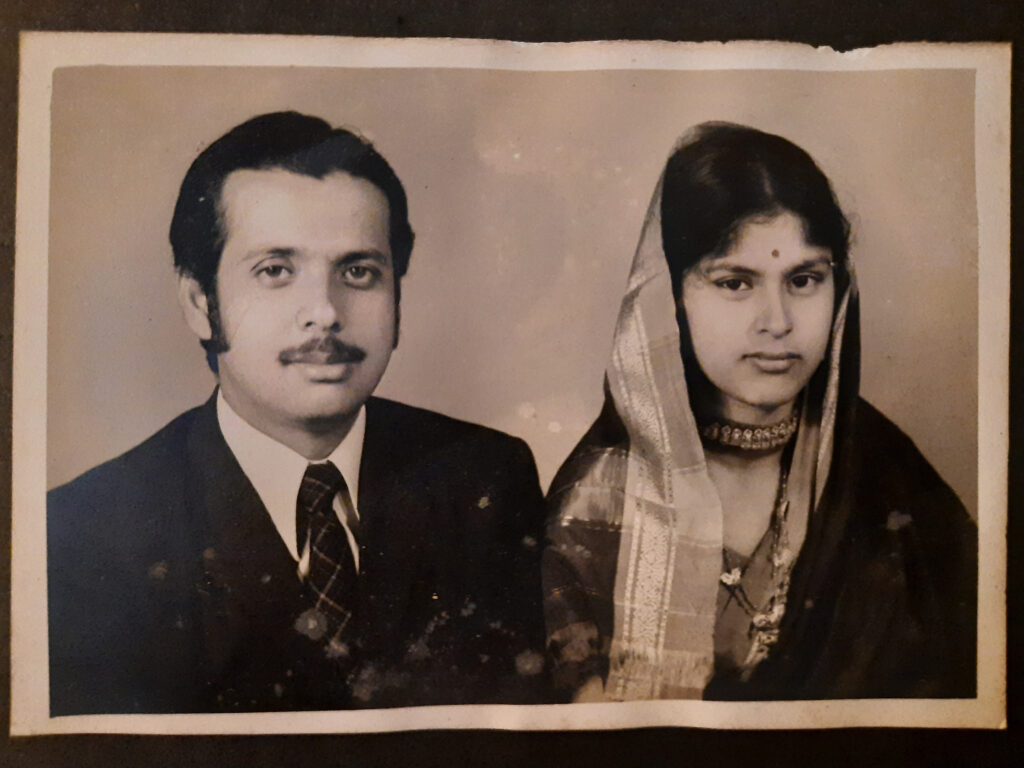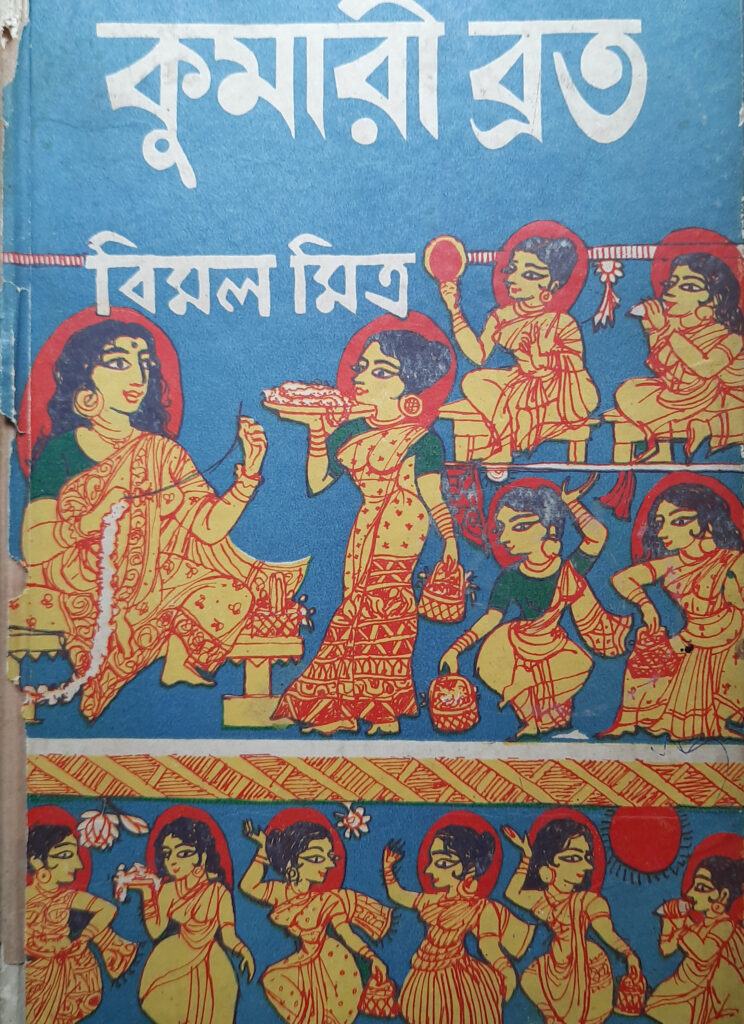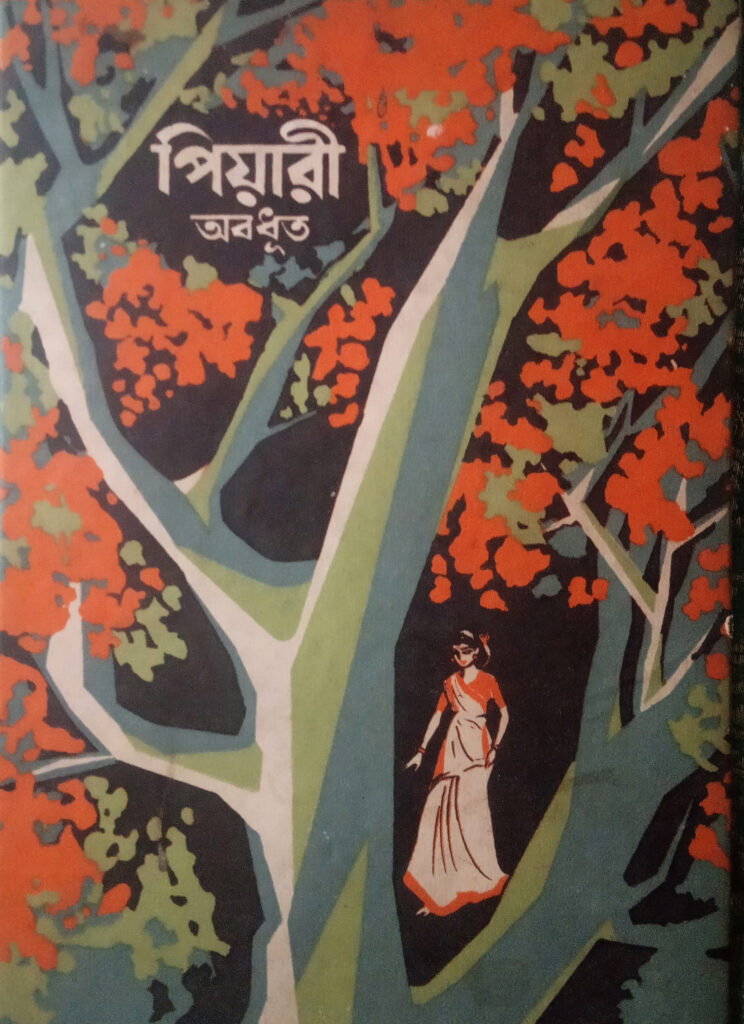TEXT AND PHOTOGRAPHS BY SHUBHAM DAS
Dibrugarh, Assam, India
It’s been almost two decades since I first grew curious about a locked cabinet in my parent’s dresser. I was told that its key was lost and that there wasn’t anything of value inside. So, the conspiracy of keeping me away from its contents was obvious to me. It took me five or so years to finally locate the key and then, a few weeks, having waited for the right moment, to open it. What I found inside was a little revelation of sorts- stacked horizontally, lay an intriguing collection of Bangla literature, almost all of them dated 1973 along with short handwritten notes on the title pages. The books ranged from Tagore’s seminal literary treatise, Sahityer Pathe, to Gour Kishore Ghosh’s 1969 revolutionary drama, Sagina Mahato.
I decided to confront my father about this greatly enticing secret that had been kept from me. As a child, I was a keen reader – secondhand copies of abridged Dickens and Kipling novels, which would’ve belonged to one of my cousins, were the first books I read. I had since taken to reading almost anything I could get my hands on. To be more exact, my parents knew that there was nothing in the house that would have been more exciting to me than those books when I first found them.

Sagina Mahato by Gourkishore Ghosh 
Shahityer Pathe by Rabindranath Tagore
But my father didn’t seem to be a very literarily inclined man; with the time he was able to spend with his family in those days, he could only put an effort to buy one of the annual Pujo special Saradiya magazines. So it took quite a bit of pestering for him to reveal that the books had been gifts from family and friends to the newlywed couple, from when he first got married in 1973. It seemed a little unusual to me that books were gifted at weddings, for until then I could only think of jewelry, clothes, or even mundane household items as presents. However, soon I came to learn that such a thing wasn’t really that uncommon in the 70s.
Too many of these books had paintings of forlorn looking women printed on their covers (awaiting their beloved, one would think). These were the mid-century Bengali equivalents of mass-market paperbacks, mostly meant to cater to their primary readership of newlywed women. The books in the collection were particularly peculiar as many were ascribed to Bimal Mitra, arguably the most popular Bengali writer of the 60s, famed for his 1952 classic, Saheb Bibi Aur Gholam and others, which had been instant bestsellers and adapted to the screen. However, it would appear that they had, in fact, been written by not so popular authors, and publishers in West Bengal had – with Mitra’s permission, one would assume – began using his name on the cover, likely for better sales. A Special Notice would be printed with Mitra’s disclaimer, as can be seen in the photograph below. A rough translation is –
“For my reader’s awareness I would like everyone to know that numerous books have been published in the name of Bimal Mitra. My popularity among my readers has made this possible. Whether someone really exists who goes by that name, only god would know. Whatever be the case, I am unable to accept praise for these works, and same goes for the criticism that they attract. But recently I have had to be accountable for all of that. Therefore, I want this to be in the know that none of those works have been authored by me. Other than Kodi Diye Kinlam, all other novels by me are published with a facsimile of signature on the front page.”
The buyer of these novels had only to flip the cover to know the truth, and yet such a practice prevailed. These books, of course, didn’t belong to the classical corpus of Bangla literature, but over the years these obscure titles are the ones that I’ve grown to value the most.

Bimal Mitra’s disclaimer as a Special Notice 
Inscriptions for the couple 
Inscriptions for the couple
My father rarely spoke of Ashoka (Boromaa, as she was known to me), whom he’d married in 1973. She passed away 18 years later. Two years after that he’d marry my mother. The books and tokens of the life they had once shared safely locked away in cupboards and cabinets all over the house. In those days the fact that my father had been married before was a quiet little scandal for me. The discovery of the drawer’s contents had showed me a way to come in terms with that. Much of the uneasiness, I believe, had stemmed from an air of secrecy around the topic. And the books had begun to work like enchantments, mollifying my father into opening up about that substantial fragment of his life.
My grandparents had moved to Assam in 1939, leaving their ancestral landing in Noakhali. Nine years later the partition sealed their fate with all finality, and they settled down in the little plantation town of Dibrugarh, east of the Brahmaputra valley. Decades later, as families like these who had migrated from that part of Undivided India, began to lose the unique dialects and other markers of their former homeland, Bangla literature came to them as a token of their shared fluidity of culture and identity. The tattered pile of presents that I had found was an ode, that last flicker of a memory that was now lost.

Boromaa with a friend. This picture was sent to my father before the wedding 
My Father and Boromaa, a day after their wedding
Growing up in Assam in the 90s meant that a few things were going to be different for me than how they had been for my parents. The state had since been through a difficult phase in its history and it had somewhat severe implications on the role Bangla language and literature was going to play in my life. In fact, without these books I do not think I would have had so much as a glimpse of the wonderful literary culture of Bengal. But the gifts had transcended through generations and I was fortunate enough to get the best of both worlds.
*
By the time I had turned fourteen it became too much work for my parents to keep me away from those books. Wodehouse and Blyton soon gave way to Tagore and Ashapurna Devi. To my father’s horror, one of the first books that I had pranced upon was Tagore’s literary classic about a love triangle, Chokher Bali. But he soon gave into it and insisted that I read to him.
The novel follows the life of Binodini, a young, convent-educated, widow, who, after her husband’s death, is invited by Mahendra’s mother to stay with them. Mahendra had earlier refused to marry her when a match was proposed, and subsequently married the not so educated Asha. He now finds himself being attracted to Binodini’s beauty and wit, resulting in a scandalous affair. In reality though, the book is more of a social commentary on the need for women’s education, than anything else.
Since then many evenings were spent with me floundering about with the classical Bangla of the text while he corrected my pronunciation and diction. And when he’d excuse himself for the more raunchy parts I would read them out louder to taunt him. At first, I was just awed by Tagore’s immensely beautiful Bangla, quite different from the one I was used to. My father was uncomfortable in the beginning with the choice of book, for obvious reasons. But as he tried to make me understand and appreciate the text, he opened up about his own life. Binodini was a kind of character that one doesn’t come across in literature very often. Her education was one of the most important elements to the story. And that led me to ask him about his and Boromaa’s education and upbringing. I had all sorts of questions about them, and he always obliged.
You see, he was already in his early 50s when I was born. His life seemed so much more exciting than mine, almost as much as one of those novels. It was this time that we spent together with the books in the evening that not only brought us close but gave me a teacher and a friend who, I thought, was sensible enough to really understand me. He hadn’t treated the book as something scandalous that needed to be censored for a teenager, but instead gracefully introduced me to the world of adults.
*
Through these books, I learnt about the people who had gifted and inscribed messages onto them. My father always obliged, and therefore, my questions grew more intimate and specific. His answers were always anecdotal – tender fragments of memory that would inevitably veer to her last days. How she had died of cancer, how he had left his job to look after her, how painful it had been for them both. After her death, the friends were in touch for a while but not any more.
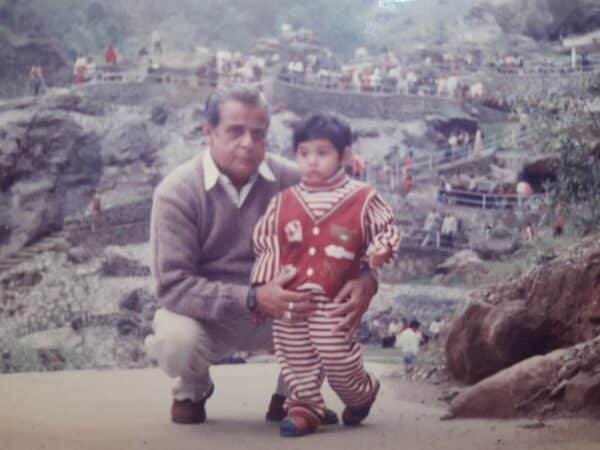
In the beginning I had wondered if my mother felt a twinge of discomfort with all the books lying around the house, like souvenirs from my father’s past. Even though she was quite younger than my father, she had been his closest friend while I was growing up. She was, therefore, privy to the parts of his life that she hadn’t been a part of. And it soon became apparent that not only she didn’t mind the books, she seemed relieved that I had shown an interest in learning Bangla.
Three years ago, after my mother’s death, I had come back home to find some of these books by his bedside. When I left home for college, they’d been put away with all my other books in a cabinet. But grief is a solitary journey and my father had taken these to be his only worthy companion. That winter he too passed, leaving me with this inheritance of words harking at a different, more plentiful time. The fact that there was a time, not too far away in history, when books were valued enough to be gifted at weddings was no less than an epiphany to me. And since then I’ve realized that reading for many people isn’t a hobby alone but a radical act of holding onto a dwindling tradition.

